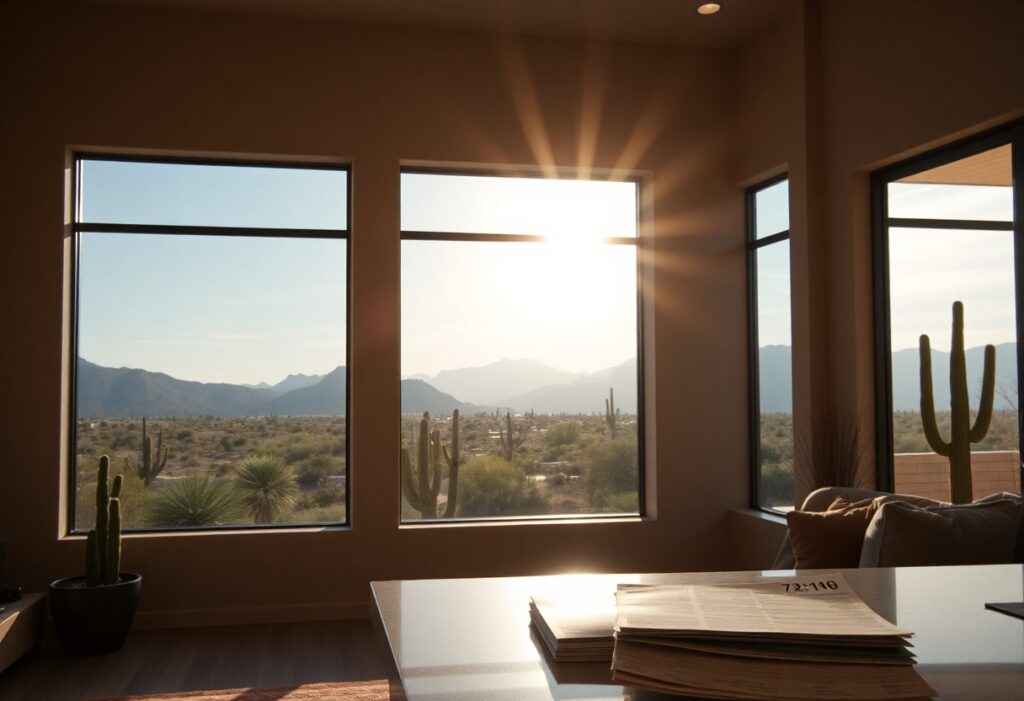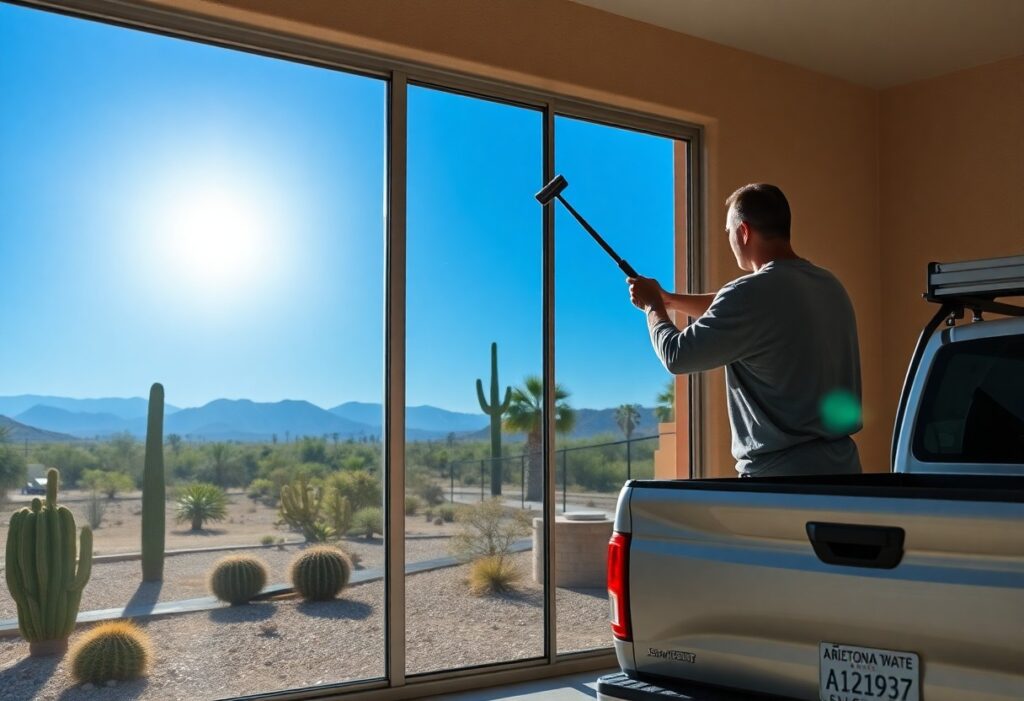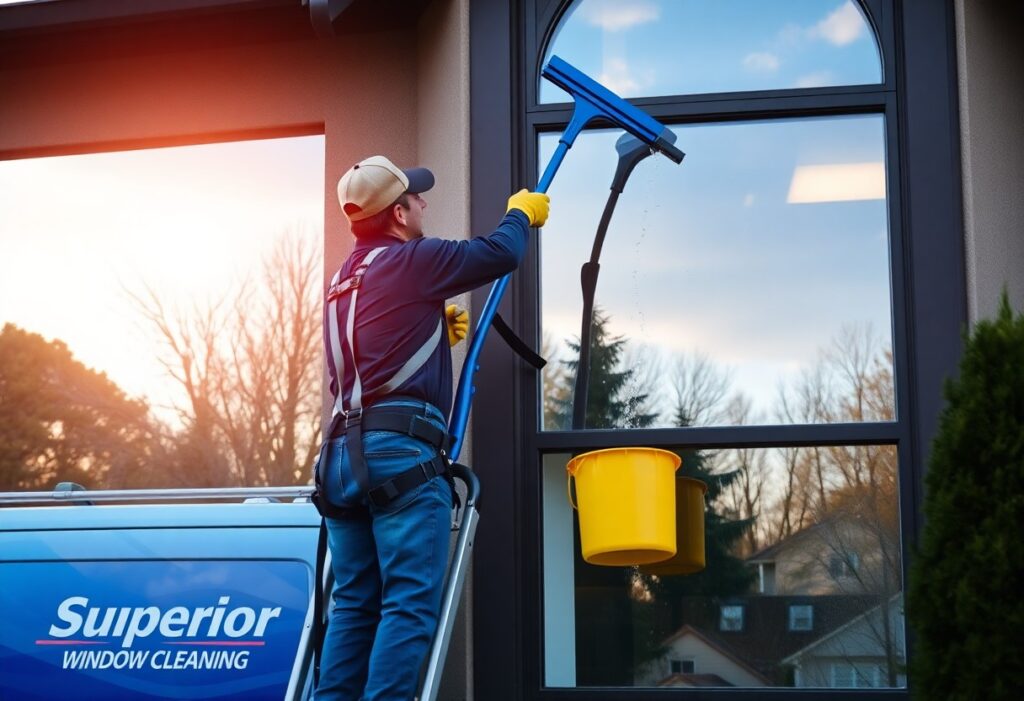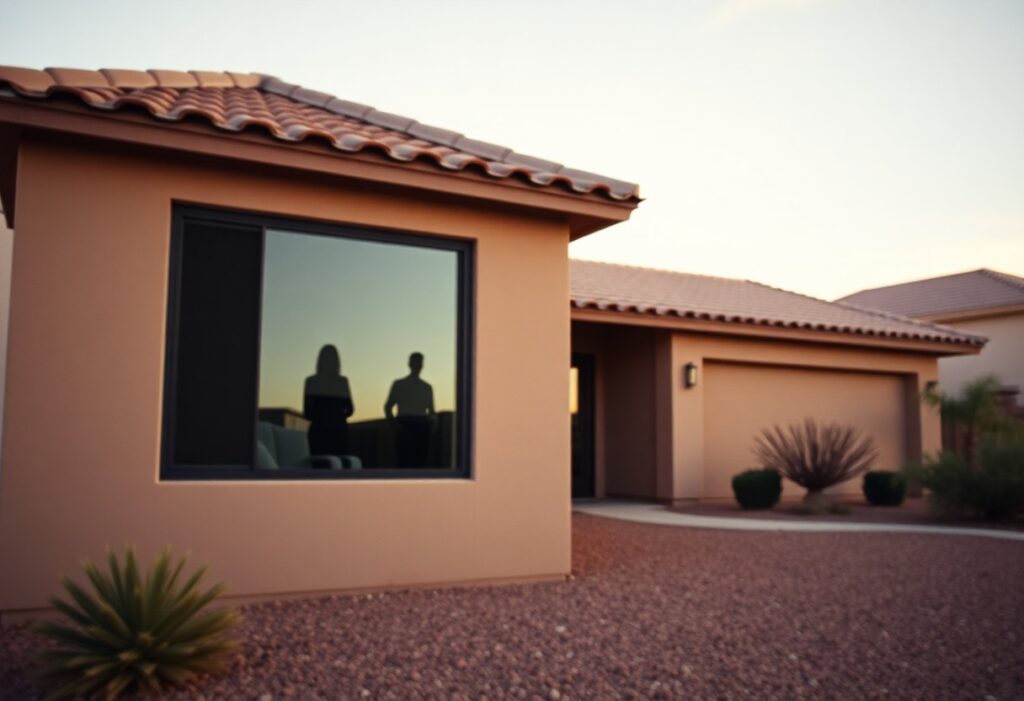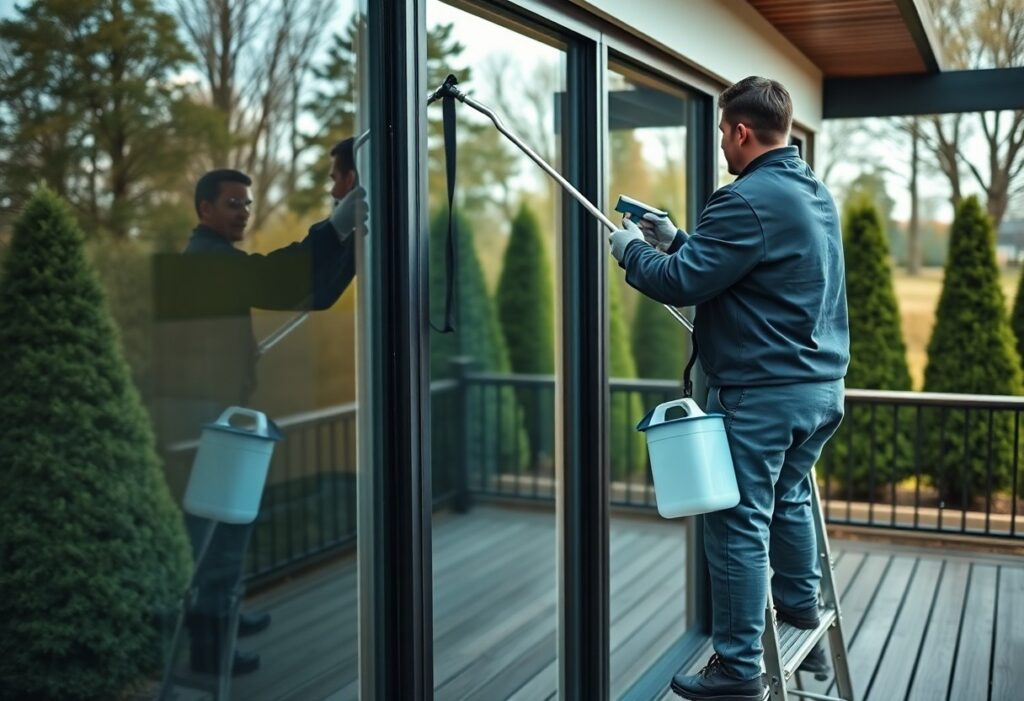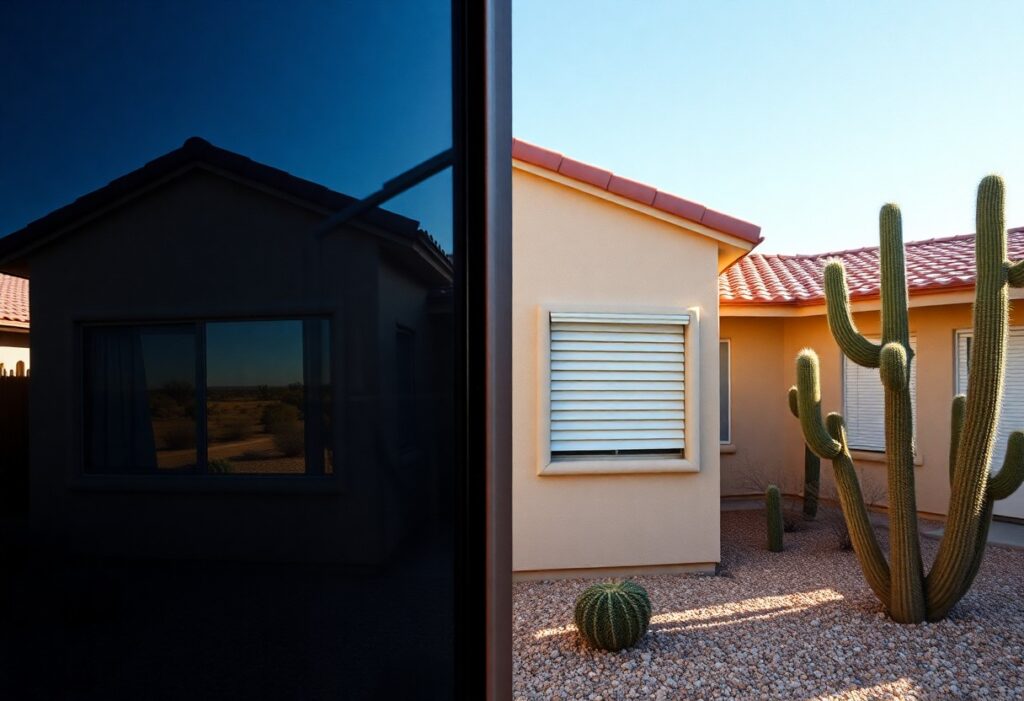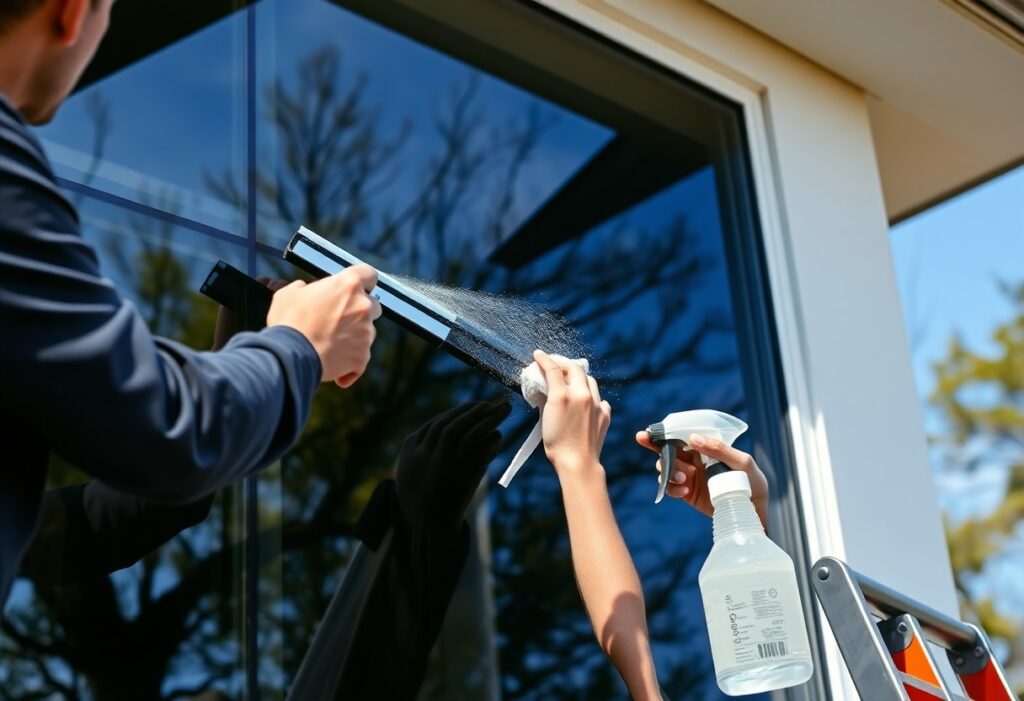Top Benefits Of Home Window Tinting In Pinal County – Comfort, Savings, And Style
There’s a practical path to greater comfort, energy savings, and upgraded curb appeal when you choose home window tinting in Pinal County; you reduce heat and glare, lower cooling bills, protect your furnishings from UV damage, and add privacy and contemporary style-resulting in a smarter, long-term investment that enhances your daily living while increasing property value. Enhanced Comfort By reducing solar heat gain you’ll feel steadier indoor temperatures even during Pinal County summers; high-performance films can cut solar heat entry by up to 70%, lower surface temperatures near windows by 10-20°F, and in local retrofits homeowners saw cooling energy fall 10-15%-so your AC cycles less and rooms stay comfortable without constant thermostat cranking. Temperature Regulation Your film selection directly changes SHGC and VLT: ceramic films can cut solar heat gain 50-70% and block up to 99% of UV, while metalized films reflect more light; depending on orientation and glass area you could lower indoor temps near windows by 5-15°F and trim cooling costs 10-25%-a 2,400 sq ft south-facing home often sees the biggest gains. Temperature Regulation Details Feature Typical Benefit / Example Solar heat gain reduction Up to 70% (ceramic films) UV protection Blocks up to 99% of UV Near-window temperature drop 5-15°F cooler surface temps Estimated cooling savings 10-25% lower summer cooling use (varies by home) Glare Reduction Glare control lets you use natural light without straining: certain films reduce reflected glare up to 80%, improving TV and monitor visibility and cutting eye fatigue, so you’ll avoid closing blinds and still get daylight-especially valuable in west- and south-facing rooms during late afternoons. Opt for a VLT in the 30-40% range to balance daylight and anti-glare; for example, a 35% VLT film often preserves views while significantly reducing screen reflections, and installers report many Pinal County homeowners reduced blind use by over 50% after tinting living-room and home-office windows. Energy Savings When you tint your windows in Pinal County, you cut direct solar heat gain-many films block 40-78% of solar energy and up to 99% of UV-so interior temperatures stay lower without overworking your AC. That reduction translates to measurable savings during long, hot summers, especially on west- and south-facing glass, where peak afternoon loads are highest and untreated windows can drive room temps several degrees above the thermostat setpoint. Lower Energy Bills You can expect cooling costs to drop because tinted glass reduces the amount of solar heat your HVAC must remove; homeowners often see 10-30% lower summer cooling bills. For example, if your summer electricity averages $200 monthly, a 15% reduction from window film would save about $30 a month. Targeted tinting on high-sun exposures yields the biggest ROI within one to three cooling seasons. HVAC Efficiency Tinting decreases peak loads so your system runs fewer hours and avoids short cycling; many homes report HVAC runtime drops of 15-25% during peak heat. That reduced duty cycle not only lowers energy use but also cuts compressor wear, which can delay costly repairs and extend effective equipment life. By lowering peak room temperatures by roughly 4-8°F on sunny afternoons, film reduces the BTU demand your compressor must meet-on a 3-ton (36,000 BTU) unit, shaving even 3,600-7,200 BTU at peak can meaningfully reduce cycle starts. Practically, that means fewer on/off cycles, steadier line pressure, and less frequent service calls, so you spend less on maintenance and preserve system efficiency reflected in real-world SEER performance. UV Protection By blocking up to 99% of UVA and UVB rays, quality window film helps you guard against sun-driven damage to skin and interiors in Pinal County’s high-UV environment. Films cut harmful radiation while preserving natural light and can reduce solar heat gain by 30-60% depending on the product, giving you measurable protection without darkening rooms excessively. Health Benefits Spending hours near windows increases cumulative UV exposure, which accelerates skin aging and harms eyes; many films block as much as 99% of UV, substantially lowering that risk. In areas where the UV index regularly exceeds 7 in summer, that reduction helps protect infants, people with photosensitivity, and anyone who works or relaxes near bright windows. Preservation of Interiors UV causes roughly 60-80% of textile and finish fading, and window film can slow that process-industry data show fading may be reduced by up to 70-80% with the right film. You’ll preserve carpets, upholstery, artwork, and wood finishes longer, especially on south- and west-facing exposures that receive the most intense sunlight. Choose neutral, low-reflective films when you want preservation without altering appearance; polyester multilayer films that block 99% of UV while keeping visible light high are ideal for galleries and living rooms. Installers commonly report homeowners delaying reupholstery or refinishing by 2-5 years after high-quality film installation, and manufacturers usually publish ASTM UV-blocking values and visible light transmission (VLT) so you can match performance to your priorities. Increased Privacy Window film gives you control over sightlines while preserving daylight: films range from very dark (around 5% VLT) to light tints (50-70% VLT), plus frosted options for full obscuration. Many homeowners in Pinal County choose 20-35% VLT on street-facing windows to block direct views from sidewalks and neighbors, yet still admit natural light and maintain curb appeal without adding blinds or curtains. Interior Visibility Daytime one-way privacy works when exterior light exceeds interior light, so you’ll see privacy during sunny afternoons but not always at night. For consistent results, select lower VLT ratings (5-20%) or frosted films for bathrooms; reflective films give daytime mirror effects while textured films hide shapes completely. Combine film choice with simple behaviors-dimming indoor lights after sunset-to keep interiors private from 10-30 feet away. Security Benefits Security film not only limits visibility but also helps hold glass together on impact, slowing forced entry and reducing flying shards. You can opt for thicker security films (commonly 7-14 mil) that, when professionally anchored to frames, delay break-ins long enough for alarms or police response to intervene. Many films also block up to 99% of UV, protecting interiors while improving safety. For maximum protection you should pair

